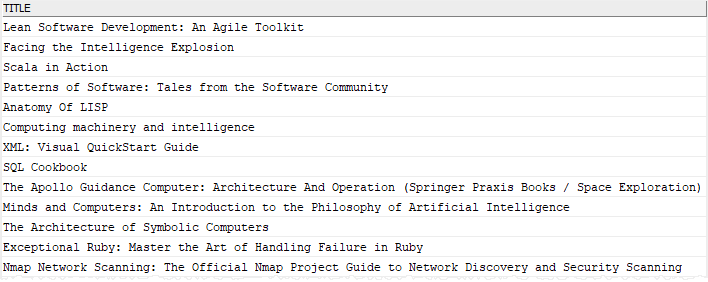How to Query DB2 Database
DB2 database is a popular relational database management system developed by IBM. If you are working with DB2 database, you will often need to query the database to retrieve information. In this article, we will discuss how to write SQL queries to query DB2 database efficiently.
Connecting to DB2 Database
Before you can query a DB2 database, you need to establish a connection to the database. You can connect to a DB2 database using various tools such as IBM Data Studio, DB2 Command Line Processor (CLP), or any programming language that supports DB2 connectivity such as Java, Python, or PHP.
Querying Data from DB2 Database
Once you have established a connection to the DB2 database, you can start querying data using SQL. SQL (Structured Query Language) is a standard language for interacting with relational databases. Here are some common SQL statements that you can use to query data from a DB2 database:
- Select Statement: The SELECT statement is used to retrieve data from one or more tables in a database. For example, to retrieve all records from a table named ’employees’, you can use the following SQL query:
SELECT * FROM employees;
- Where Clause: The WHERE clause is used to filter records based on a specific condition. For example, to retrieve all employees with a salary greater than 50000, you can use the following SQL query:
SELECT * FROM employees WHERE salary > 50000;
- Join Statements: Join statements are used to retrieve data from multiple tables based on a related column between them. For example, to retrieve employee information along with their department name, you can use a JOIN query:
SELECT e.*, d.department_name
FROM employees e
JOIN departments d ON e.department_id = d.department_id;
These are just a few examples of SQL queries that you can use to query a DB2 database. Depending on your requirements, you can tailor your SQL queries to retrieve the exact information you need.
Optimizing DB2 Queries
When querying a DB2 database, it is essential to optimize your queries to ensure optimal performance. Here are some tips to optimize your DB2 queries:
- Indexing: Indexing your tables can improve query performance by allowing the database engine to retrieve data more efficiently. Be sure to index columns that are frequently used in WHERE clauses or JOIN conditions.
- Query Execution Plan: Use the EXPLAIN statement to analyze the query execution plan and identify any potential performance bottlenecks. This will help you understand how your queries are being processed by the DB2 optimizer.
- Avoid Full Table Scans: Try to avoid full table scans by using appropriate indexes and optimizing your SQL queries. Full table scans can be resource-intensive and slow down query performance.
By following these optimization techniques, you can ensure that your DB2 queries run efficiently and deliver results quickly.
Conclusion
Querying a DB2 database is a fundamental task for anyone working with DB2. By understanding how to write efficient SQL queries and optimize them for performance, you can make the most out of your DB2 database and retrieve the information you need effectively.
